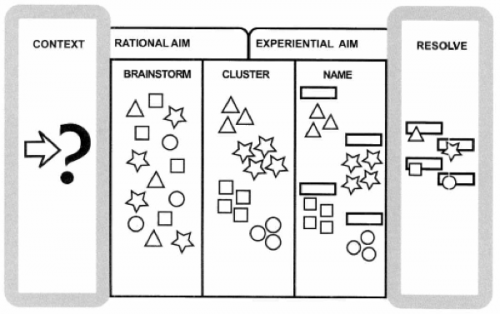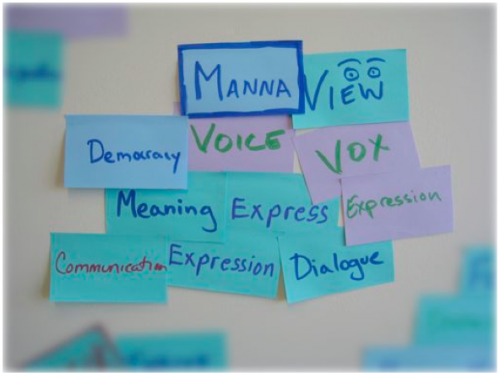Write first, outline later
Peter Elbow on free writing, from the book Writing without teachers (1973):
There is a paradox about control which this kind of writing brings into the open. The common model of writing I grew up with preaches control. It tells me to think first, make up my mind what I really mean, figure out ahead of time where I am going, have a plan, an outline, don’t dither, don’t be ambiguous, be stern with myself, don’t let things out of hand. As I begin to try to follow this advice, I experience a sense of satisfaction and control: “I’m going to be in charge of this thing and keep it out of any swamps!” Yet almost always my main experience ends up one of not being in control, feeling stuck, feeling lost, trying to write something and never succeeding. Helplessness and passivity.
The developmental model, on the other hand, preaches, in a sense, lack of control: don’t worry about not knowing what you mean or what you intend ahead of time; you don’t need a plan or an outline, let things get out of hand, let things wander and digress. Though this approach makes for initial panic, my overall experience with it is increased control. Not that I always know what I am doing, not that I don’t feel lost, baffled, and frustrated. But the overall process is one that doesn’t leave me so helpless. I can get something written when I want to. There isn’t such a sense of mystery, of randomness.
This paradox of increased overall control through letting go a bit seems paradoxical only because our normal way of thinking about control is mistakenly static: it is not development or process-oriented because it leaves out the dimension of time. Our static way of thinking makes us feel we must make a single choice as to whether to be a controlled person or an out-of-control person. The feeling goes like this: “Ugh. If I just write words as they come, allow myself to write without a plan or an outline, allow myself to digress or wander, I’ve turned into a blithering idiot. I’ll degenerate. I’ll lose the control I’ve struggled so hard to get. First I’ll dangle participles, then I’ll split infinitives, then I’ll misspell words, then I’ll slide into disagreement of subject and verb. Soon I’ll be unable to think straight. Unable to find flaws in an argument. Unable to tell a good argument from a bad one. Unable to tell sound evidence from phony evidence. My mind will grow soft and limp, it will atrophy; it will finally fall off. No! I’ll be tough. I won’t be wishy-washy. I’ll have high standards. I’ll be rigorous. I’ll make every argument really stand up. I won’t be a second-rate mind. I’m going to be a discriminating person. I’m going to keep my mind sharp at all times.
But this static model isn’t accurate. Most processes engaged in by live organisms are cyclic, developmental processes that run through time and end up different from how they began. The fact is that most people find they improve their ability to think carefully and discriminatingly if they allow themselves to be sloppy and relinquish control at other times. You usually cannot excel at being tough-minded and discriminating unless it is the final stage in an organic process that allowed you to be truly open, accepting—even at times blithering.
You can encourage richness and chaos by encouraging digressions. We often see digressions as a waste of time and break them off when we catch ourselves starting one. But do the opposite. Give it its head. It may turn out to be an integral part of what you are trying to write. Even if it turns out to be an excrescence to be gotten rid of, if it came to you while you were thinking about X it must be related and a source of leverage. And you may not be able to get rid of it completely unless you see more of it. Almost always you cannot disentangle the good insight from the excrescence until after you have allowed the digression to develop. At the early stage the two are so intertwined that you can’t tell one from the other. That’s why it feels both interesting and wrong. There are concepts in there that you haven’t yet learned to discriminate.

